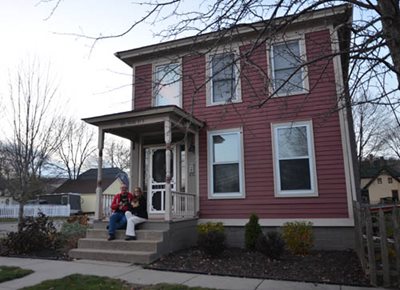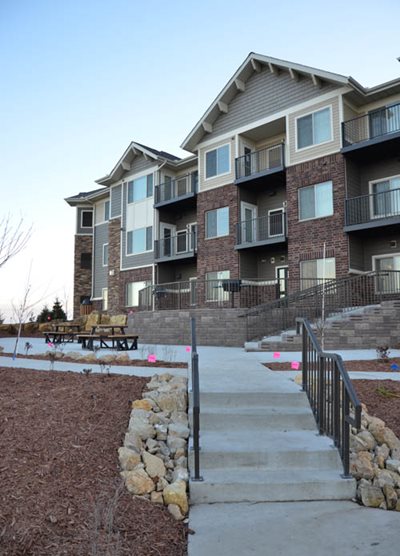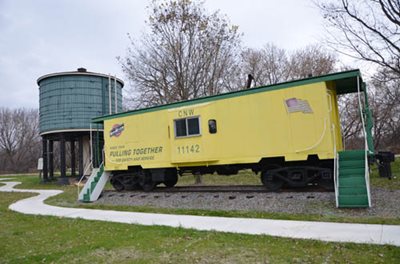Carver is a city of contrasts. Strolling through the quiet, historic downtown on the west bank of the Minnesota River, you wouldn’t know what’s happening up on the bluffs. There, direct access to the expanded Highway 212, Carver’s new housing, a new SouthWest Transit station, and an elementary school under construction signal growth.
CARVER COMMUNITY PROFILE
Location – West bank of the Minnesota River, 31 miles southwest of downtown Minneapolis
Population – 4,330 (2015)
Households – 1,341 (2015)
Jobs – 257 (2015)
Notable feature – Carver Historic District, with 87 buildings
Parks and open space – 1,340 acres, home to MN Valley National Wildlife Refuge
Primary roadways – Highway 212, County Road 11, County Road 40
Carver’s population grew from 744 people in 1990 to 1,266 in 2,000, then doubled by 2006. By 2015, 4,330 people called Carver home.
An orderly annexation agreement in place with neighboring Dahlgren Township ensures the city has space to expand. The Metropolitan Council forecasts Carver’s population to grow to 15,500 by 2040.
“We’re at a point where we can grow, we’ve got the infrastructure in place, and we’re going to grow – we’re ready,” said Mayor Mike Webb.
Residents develop vision, guiding principles
Under state law, once each decade cities in the seven-county metro area are required to develop a 30-year comprehensive plan. A local comprehensive plan represents a community’s vision of how it wants to grow and change – how it will develop its land, redevelop older areas, ensure adequate housing, provide roads and sewers, protect natural areas, and meet other community objectives. The Met Council reviews those plans for compatibility with regional plans for transportation, water resources, and parks and open space.
Carver laid the foundation for updating its comprehensive plan by creating two focus groups made up of residents. They were asked to develop a vision for Carver’s future, discuss and document the issues facing the City, and create guiding principles. The principles will be used to support public engagement and land use planning through the City’s comp plan update.
 Participants in the focus groups said they would like Carver to keep a small town and neighborly feel, while allowing for balanced development, job creation and an active historical downtown. They want commercial, industrial and affordable residential development, while not losing focus on attracting youth, enhancing community spirit, and managing natural and recreation resources.
Participants in the focus groups said they would like Carver to keep a small town and neighborly feel, while allowing for balanced development, job creation and an active historical downtown. They want commercial, industrial and affordable residential development, while not losing focus on attracting youth, enhancing community spirit, and managing natural and recreation resources.
Six guiding principles for Carver comprehensive planning:
-
Develop community cohesiveness through collaboration
-
Compete for commercial and industrial development
-
Support the historic downtown
-
Encourage affordable housing for aging and new residents
-
Communication, education and transparency
-
Leverage park and school partnerships
See the full report, Focus Group Guiding Principles (pdf).
Appointing neighborhood advocates
 The City Council has already adopted one of the groups’ recommendations. In November, the Council approved the concept of having eight people appointed to serve as advocates, each for a designated geographic area. The City will host a quarterly meeting with the group.
The City Council has already adopted one of the groups’ recommendations. In November, the Council approved the concept of having eight people appointed to serve as advocates, each for a designated geographic area. The City will host a quarterly meeting with the group.
The meeting will have three components: education about an ongoing aspect of City operations/services; discussion of a current issue; and Q & A. The expectation is that these advocates will share information with their neighbors, informally, when opportunities arise.
“Our goal is to create long-lasting relationships with residents and get more people involved with the City,” said City Administrator Brent Mareck. The City will seek volunteers and draw names from eight hats to name the first group. They will serve for two years, and be responsible for finding their replacements.
A related recommendation was that the City assess upcoming decisions for the level of emotion they might bring up in residents, and then customize their public engagement strategies based on the public’s ability to influence decisions. Fresh in residents’ memories was the controversy over a 68-unit affordable housing development that some feared would bring more crime to the city. It was a development the city had committed to in its last comprehensive plan, adopted in 2008, which many newer city residents had not been involved in creating.
Carver Crossing, which opened in August fully rented, “has been very well received,” said Webb. “Any issues we’ve had have been the same they would be for market-rate apartments.”
Finding the right balance for future housing development
 As the City looks to the future of housing, they will search for the right balance between high-, medium-, and low-density housing, City Planner Cindy Nash said. They will likely guide less land for medium- and high-density housing than they have in the current plan because of lack of market demand. They will also need to “clearly define these terms,” Webb said, so that residents know how to respond.
As the City looks to the future of housing, they will search for the right balance between high-, medium-, and low-density housing, City Planner Cindy Nash said. They will likely guide less land for medium- and high-density housing than they have in the current plan because of lack of market demand. They will also need to “clearly define these terms,” Webb said, so that residents know how to respond.
Webb said he also believes too much land is zoned commercial and industrial in the current plan. A recent Urban Land Institute study done for Carver encouraged the City to “focus on housing and the business will come,” Webb said. “That makes sense.”
Another element of the comp plan that will receive attention in this update is transportation.
“Our local transportation network—making sure our street infrastructure is compatible with our land uses—will be important,” Mareck said. “We’re working with the county to ensure that.”
The City expects just minor updates to the water supply element of its comp plan. “We did a lot of work on water supply in our last plan,” Nash said. “Our infrastructure for growth is largely in place.”
All that said, about 50% of Carver’s land use is parks and open space, including two units of the Minnesota River National Wildlife Refuge, and no big shifts are planned there.
The City is currently developing a work plan and schedule for its comprehensive plan update, due to the Met Council by the end of 2018.
Cooperating with its neighbors
Partnerships with nearby communities add to the quality of life in Carver, Webb said. For example, the City has a recreation agreement with neighboring Chaska, which “has a phenomenal program and facilities,” Mareck said. “We can offer our residents the same services and help Chaska offset some of their costs. They also offer some programs in our community. So that’s a bunch of programs that we don’t have to duplicate.”
Quarterly breakfast meetings between the mayors of Carver, Chanhassen, Chaska, and Victoria keep the relationships strong, as do regular meetings of those cities’ managers/administrators.
As for Carver’s relationship with the Met Council, Webb gives Council Chair Adam Duininck credit for getting out into the communities and being accessible, and making his staff very accessible. “It may not win me any votes to say it, but I think we have a great relationship, Webb said.”